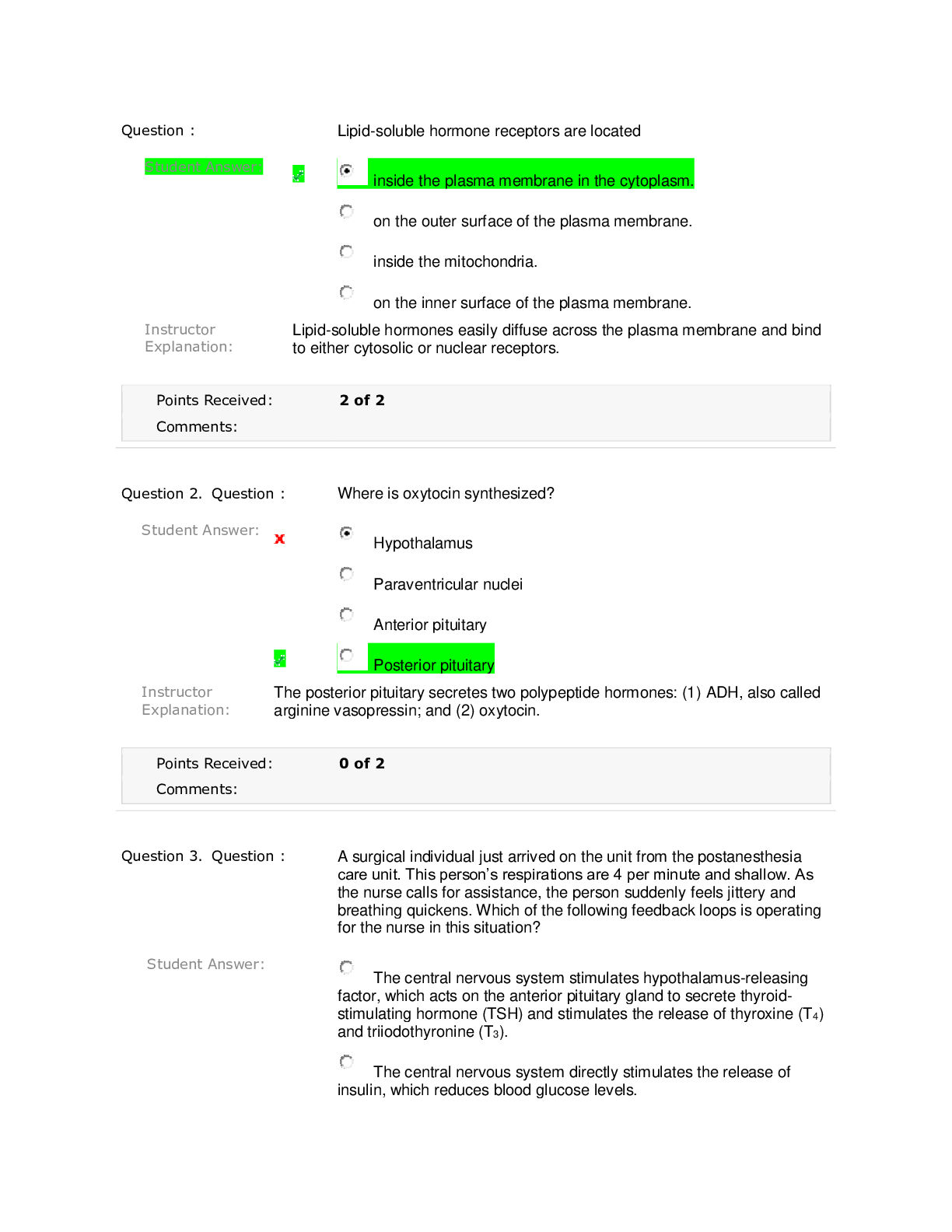*NURSING > EXAM > Portage Learning; MED Nursing Fundamentals Week 5 Exam and Summary/Definition in this one Document ( (All)
Portage Learning; MED Nursing Fundamentals Week 5 Exam and Summary/Definition in this one Document (Latest)
Document Content and Description Below
Which of the following examples are steps of nursing assessment? (Select all that apply.) 1. Collection of information from patient's family members 2. Recognition that further observations are need... ed to clarify information 3. Comparison of data with another source to determine data accuracy 4. Complete documentation of observational information 5. Determining which medications to administer based on a patient's assessment data A nurse assesses a patient who comes to the pulmonary clinic. "I see that it's been over 6 months since you've been here, but your appointment was for every 2 months. Tell me about that. Also I see from your last visit that the doctor recommended routine exercise. Can you tell me how successful you've been in following his plan?" The nurse's assessment covers which of Gordon's functional health patterns? 1. Value-belief pattern 2. Cognitive-perceptual pattern 3. Coping-stress-tolerance pattern 4. Health perception-health management pattern When a nurse conducts an assessment, data about a patient often comes from which of the following sources? (Select all that apply.) 1. An observation of how a patient turns and moves in bed 2. The unit policy and procedure manual 3. The care recommendations of a physical therapist 4. The results of a diagnostic x-ray film 5. Your experiences in caring for other patients with similar problems The nurse observes a patient walking down the hall with a shuffling gait. When the patient returns to bed, the nurse checks the strength in both of the patient's legs. The nurse applies the information gained to suspect that the patient has a mobility problem. This conclusion is an example of: 1. Cue. 2. Reflection. 3. Clinical inference. 4. Probing. A 72-year-old male patient comes to the health clinic for an annual follow-up. The nurse enters the patient's room and notices him to be diaphoretic, holding his chest and breathing with difficulty. The nurse immediately checks the patient's heart rate and blood pressure and asks him, "Tell me where your pain is." Which of the following assessment approaches does this scenario describe? 1. Review of systems approach 2. Use of a structured database format 3. Back channeling 4. A problem-oriented approach The nurse asks a patient, "Describe for me a typical night's sleep. What do you do to fall asleep? Do you have difficulty falling or staying asleep? This series of questions would likely occur during which phase of a patient-centered interview? 1. Orientation 2. Working phase 3. Data validation 4. Termination A nurse is assigned to a 42-year-old mother of 4 who weighs 136.2 kg (300 lbs), has diabetes, and works part time in the kitchen of a restaurant. The patient is facing surgery for gallbladder disease. Which of the following approaches demonstrates the nurse's cultural competence in assessing the patient's health care problems? 1. "I can tell that your eating habits have led to your diabetes. Is that right?" 2. "It's been difficult for people to find jobs. Is that why you work part time?" 3. "You have four children; do you have any concerns about going home and caring for them?" 4. "I wish patients understood how overeating affects their health." Which type of interview question does the nurse first use when assessing the reason for a patient seeking health care? 1. Probing 2. Open-ended 3. Problem-oriented 4. Confirmation A nurse gathers the following assessment data. Which of the following cues together form(s) a pattern suggesting a problem? (Select all that apply.) 1. The skin around the wound is tender to touch. 2. Fluid intake for 8 hours is 800 mL. 3. Patient has a heart rate of 78 beats/min and regular. 4. Patient has drainage from surgical wound. 5. Body temperature is 38.3° C (101° F). 6. Patient states, "I'm worried that I won't be able to return to work when I planned." A nurse is checking a patient's intravenous line and, while doing so, notices how the patient bathes himself and then sits on the side of the bed independently to put on a new gown. This observation is an example of assessing: 1. Patient's level of function. 2. Patient's willingness to perform self-care. 3. Patient's level of consciousness. 4. Patient's health management values. A nurse makes the following statement during a change-of-shift report to another nurse. "I assessed Mr. Diaz, my 61-year-old patient from Chile. He fell at home and hurt his back 3 days ago. He has some difficulty turning in bed, and he says that he has pain that radiates down his leg. He rates his pain at a 6, and he moves slowly as he transfers to a chair." What can the nurse who is beginning a shift do to validate the previous nurse's assessment findings when she conducts rounds on the patient? (Select all that apply.) 1. The nurse asks the patient to rate his pain on a scale of 0 to 10. 2. The nurse asks the patient what caused his fall. 3. The nurse asks the patient if he has had pain in his back in the past. 4. The nurse assesses the patient's lower-limb strength. 5. The nurse asks the patient what pain medication is most effective in managing his pain. A patient who visits the surgery clinic 4 weeks after a traumatic amputation of his right leg tells the nurse practitioner that he is worried about his ability to continue to support his family. He tells the nurse he feels that he has let his family down after having an auto accident that led to the loss of his left leg. The nurse listens and then asks the patient, "How do you see yourself now?" On the basis of Gordon's functional health patterns, which pattern does the nurse assess? 1. Health perception-health management pattern 2. Value-belief pattern 3. Cognitive-perceptual pattern 4. Self-perception-self-concept pattern [Show More]
Last updated: 2 years ago
Preview 1 out of 35 pages

Buy this document to get the full access instantly
Instant Download Access after purchase
Buy NowInstant download
We Accept:

Reviews( 0 )
$10.00
Can't find what you want? Try our AI powered Search
Document information
Connected school, study & course
About the document
Uploaded On
Jun 14, 2022
Number of pages
35
Written in
Additional information
This document has been written for:
Uploaded
Jun 14, 2022
Downloads
0
Views
67

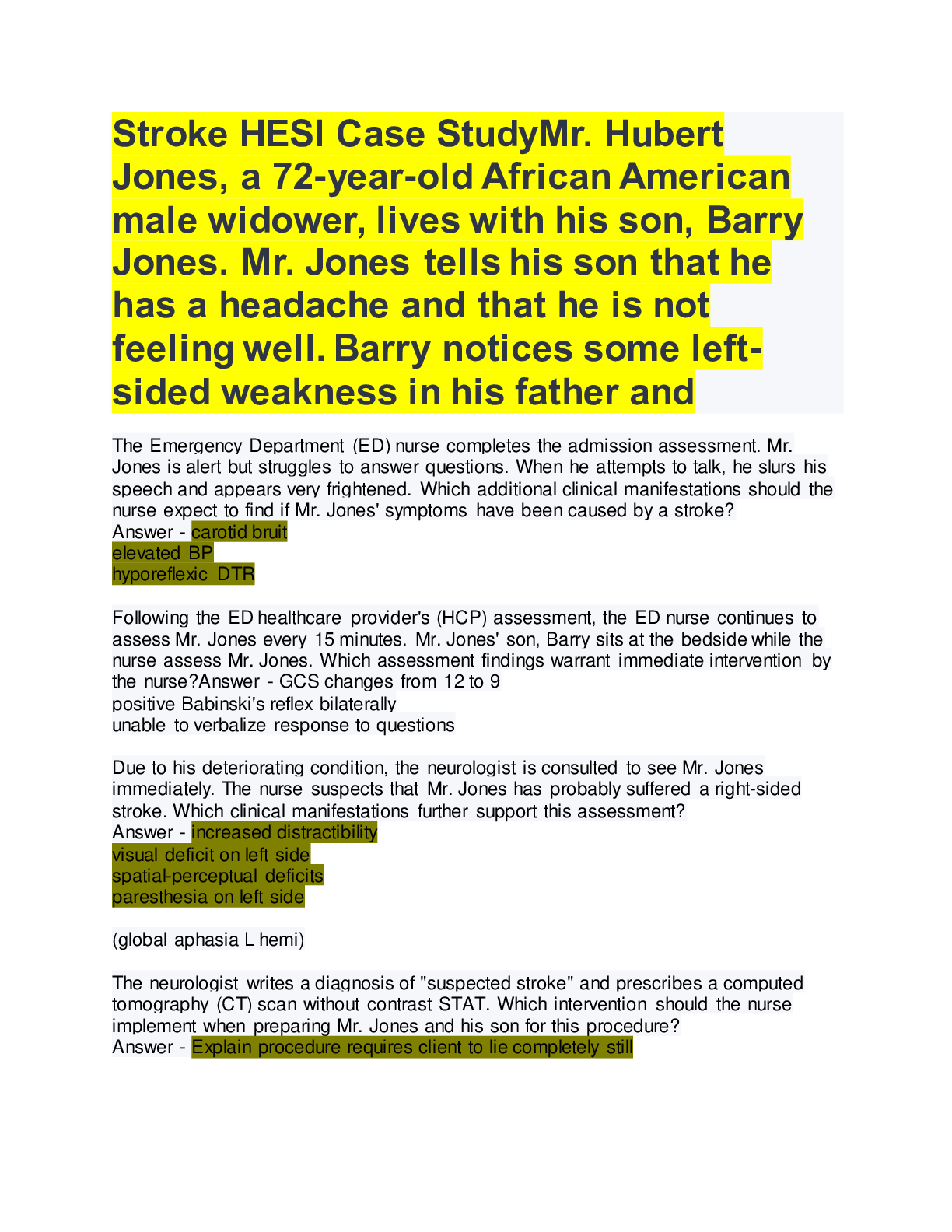
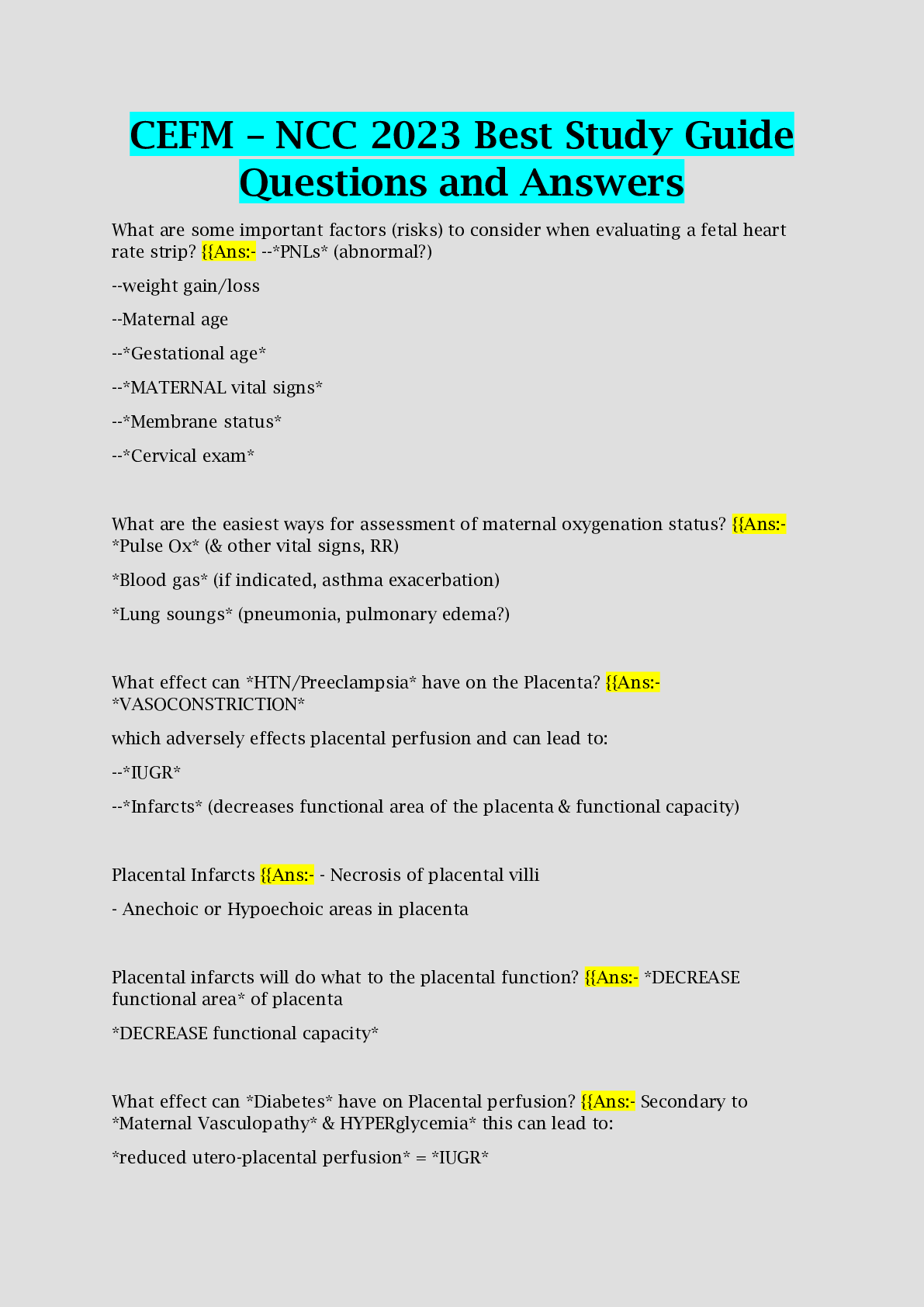
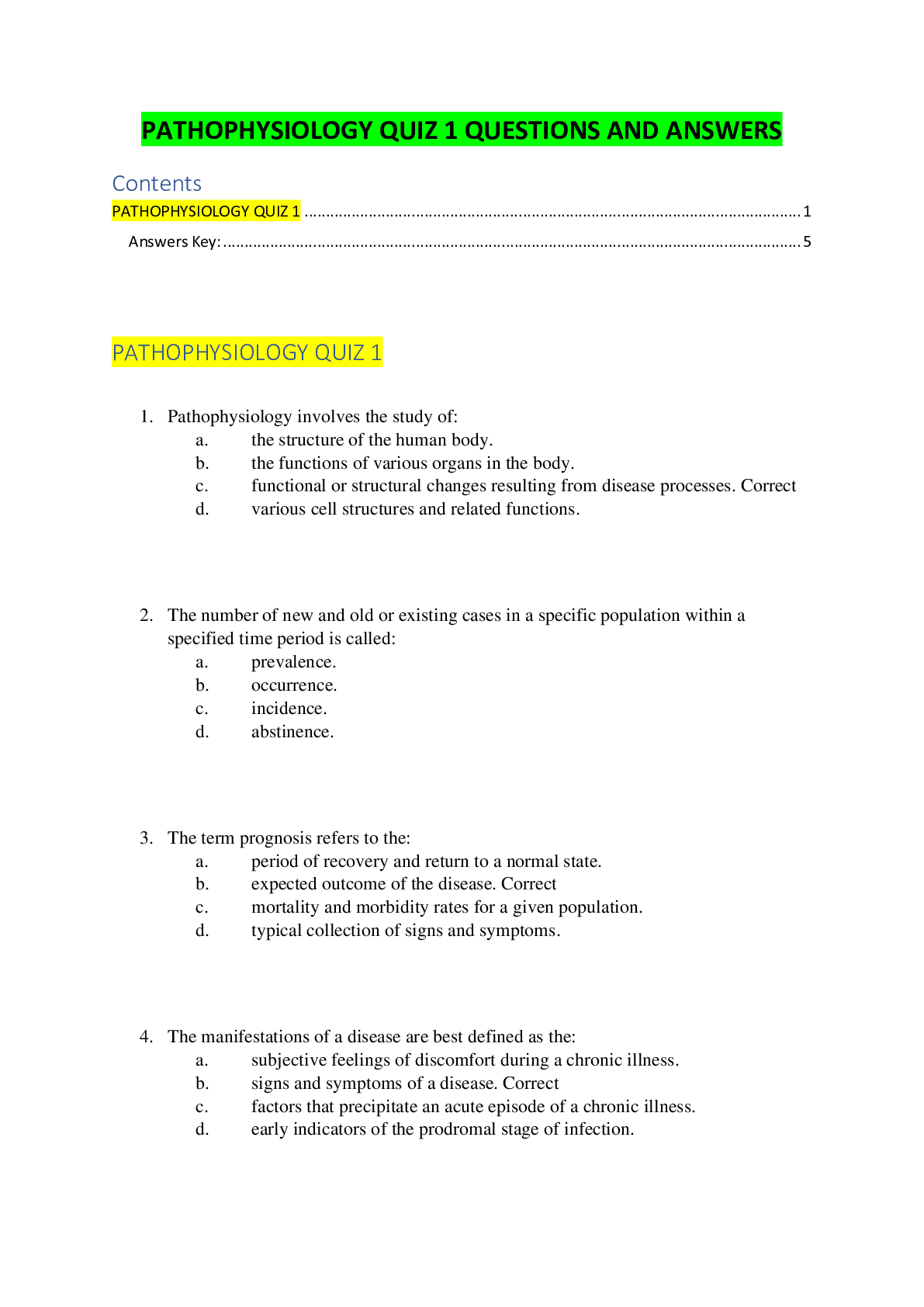
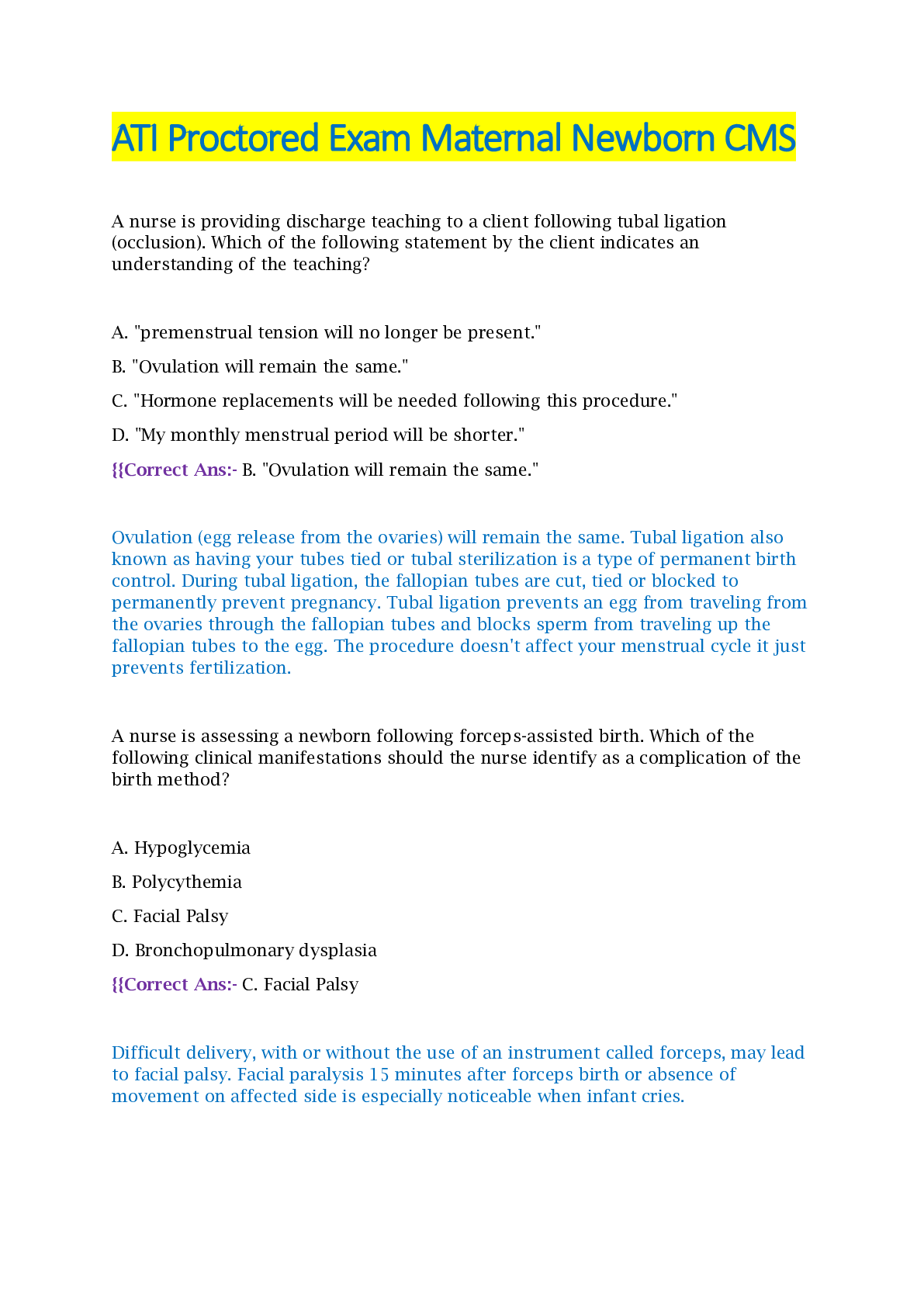
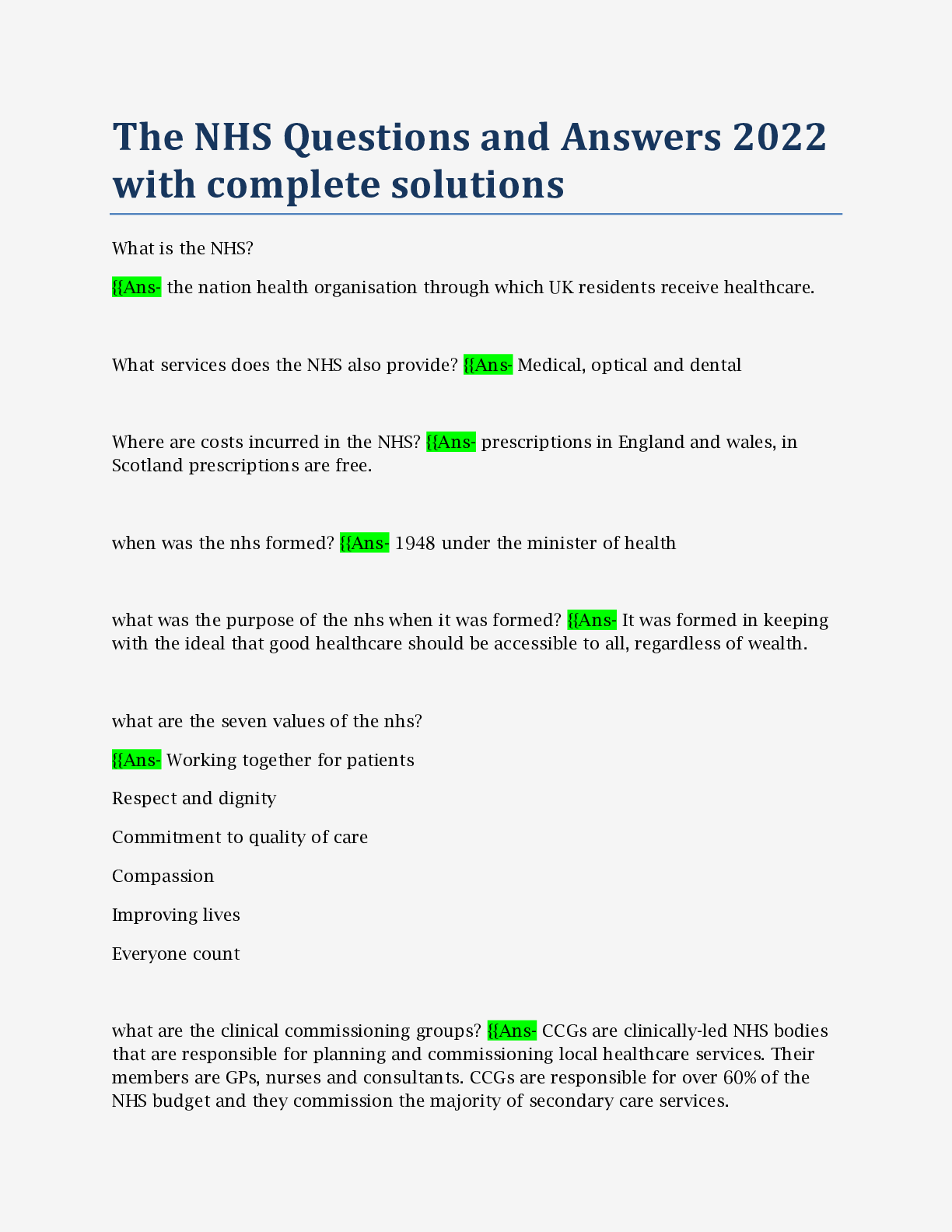
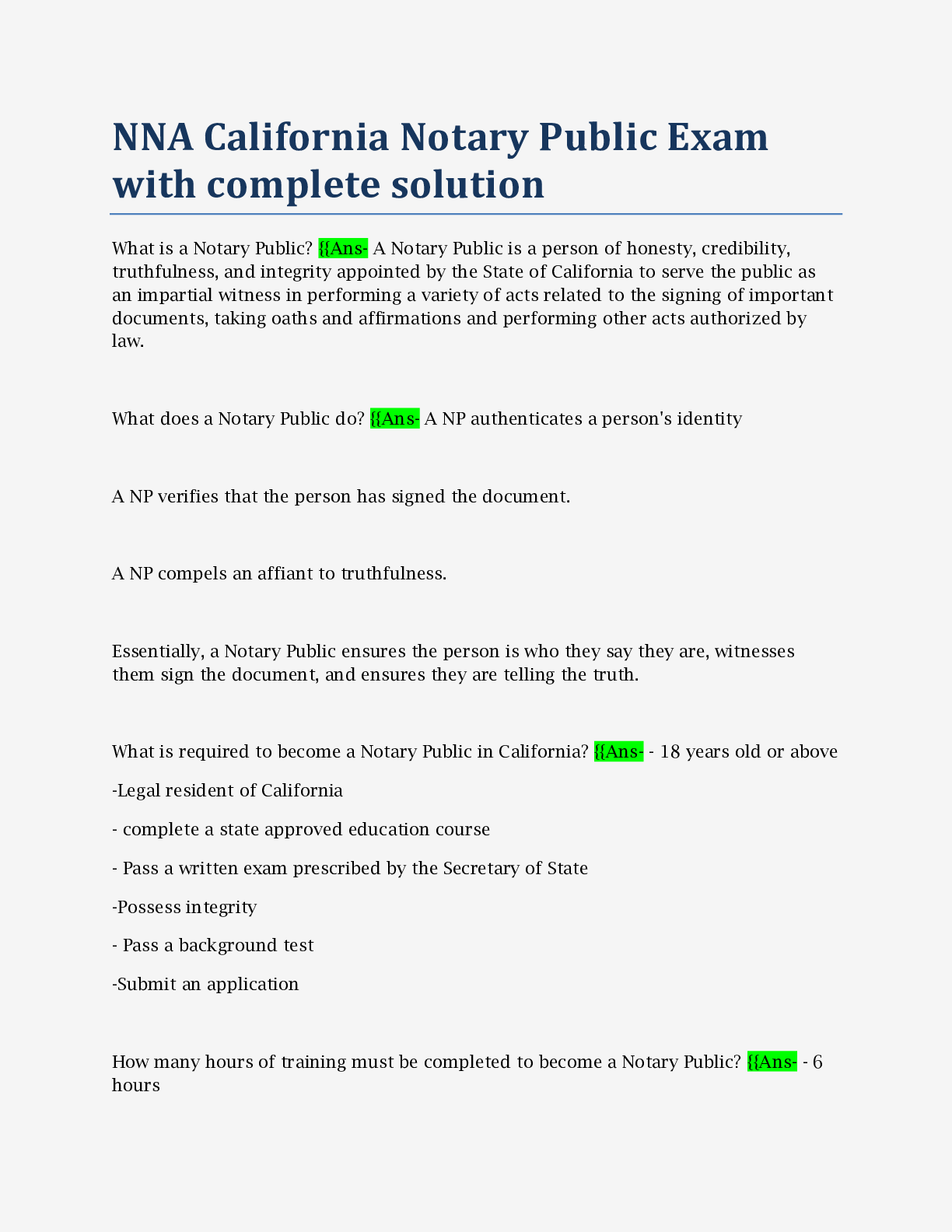

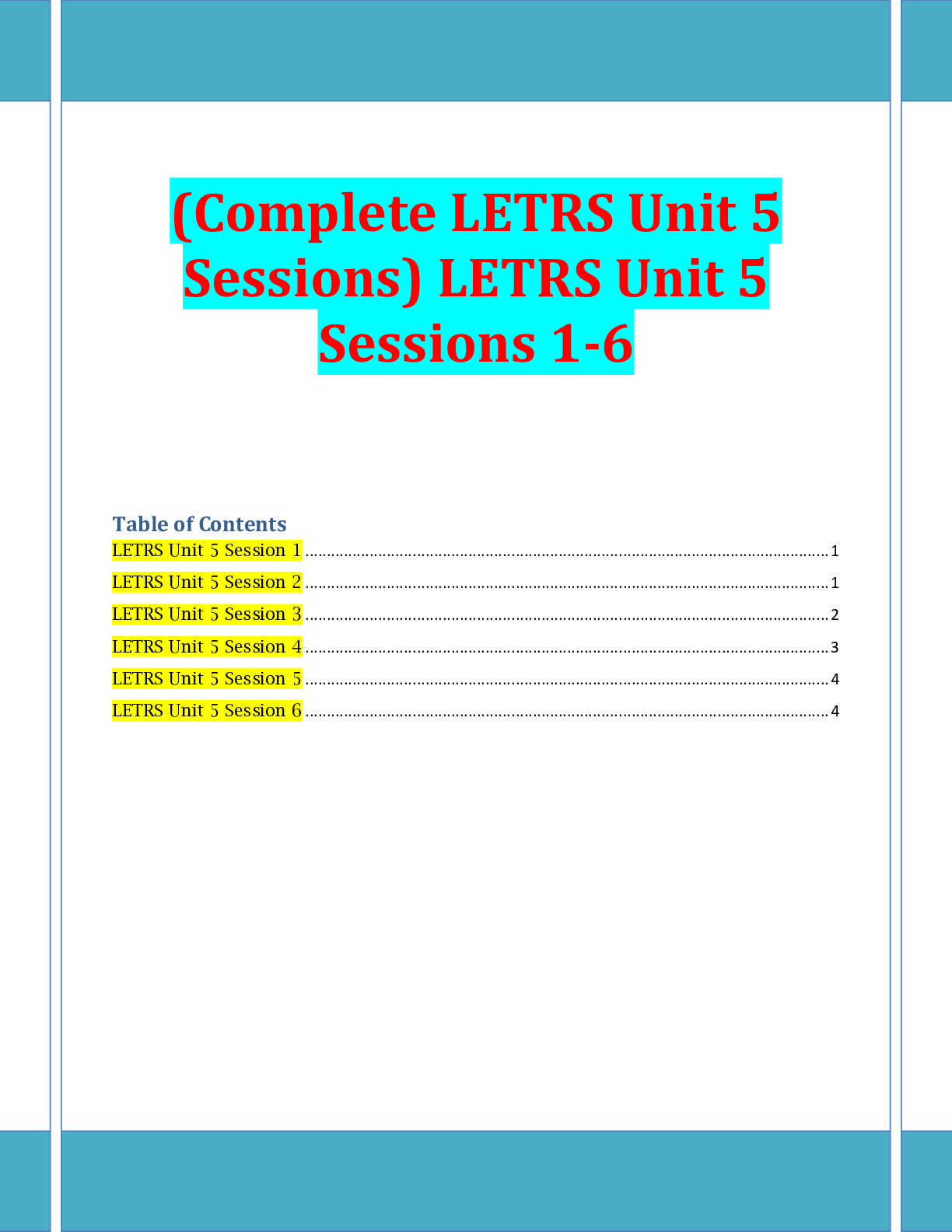
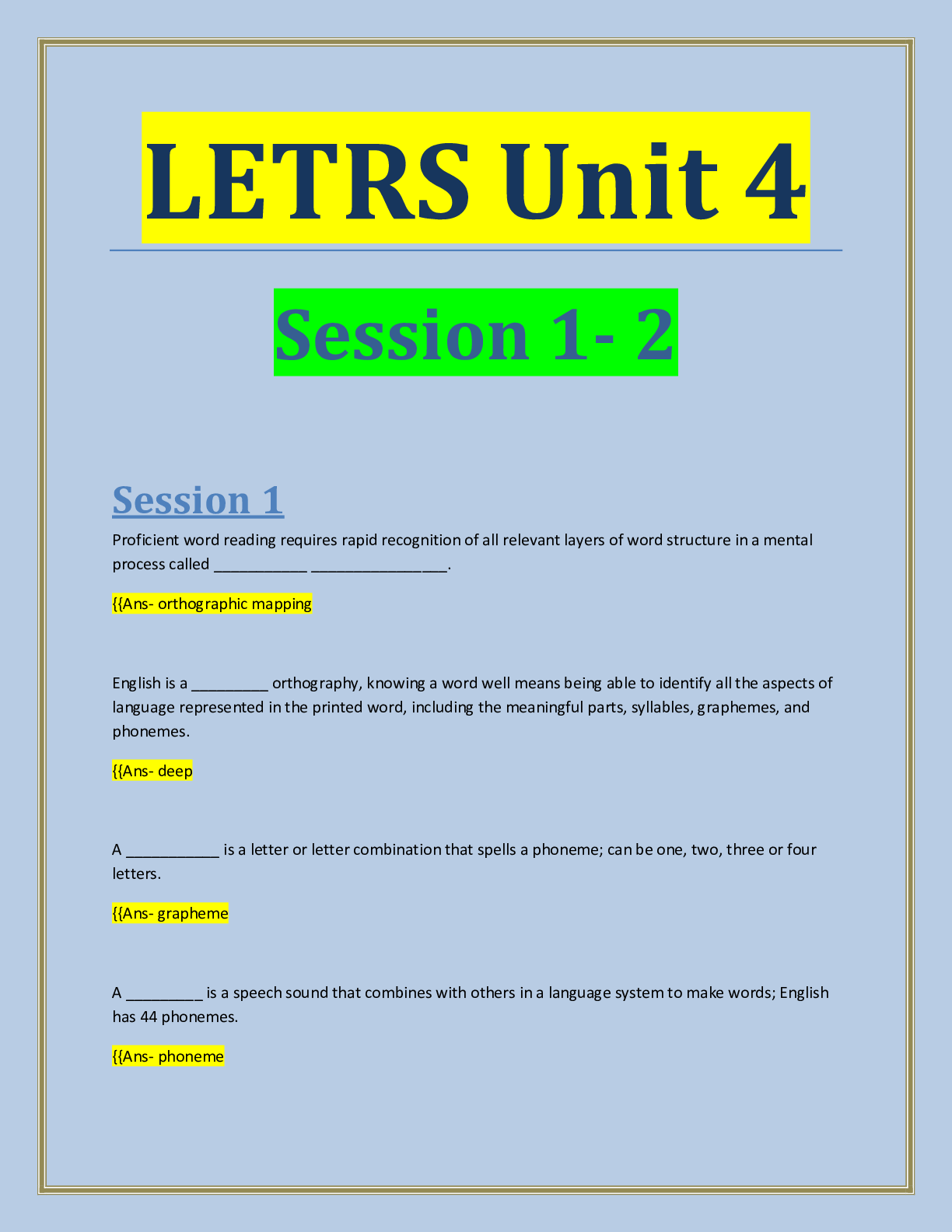
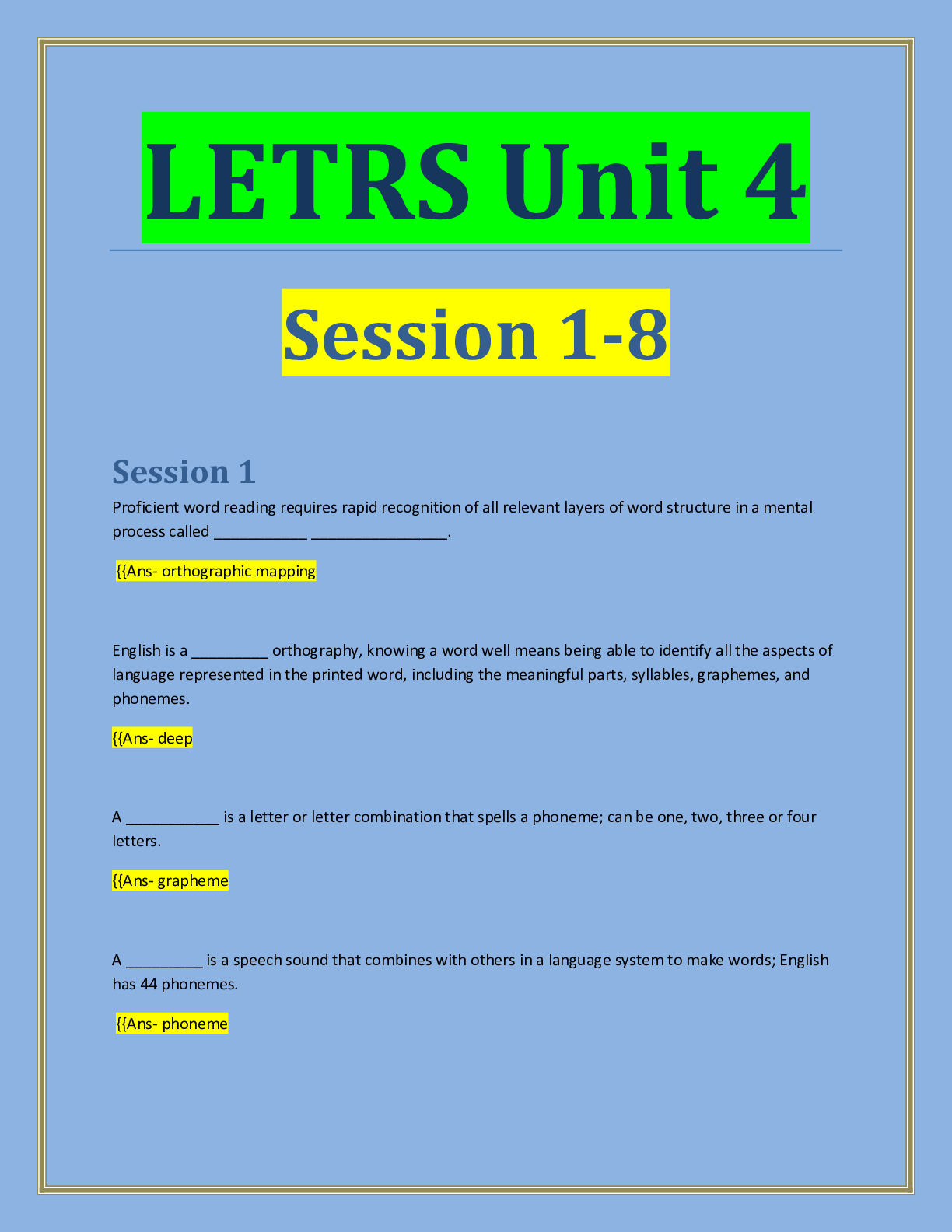

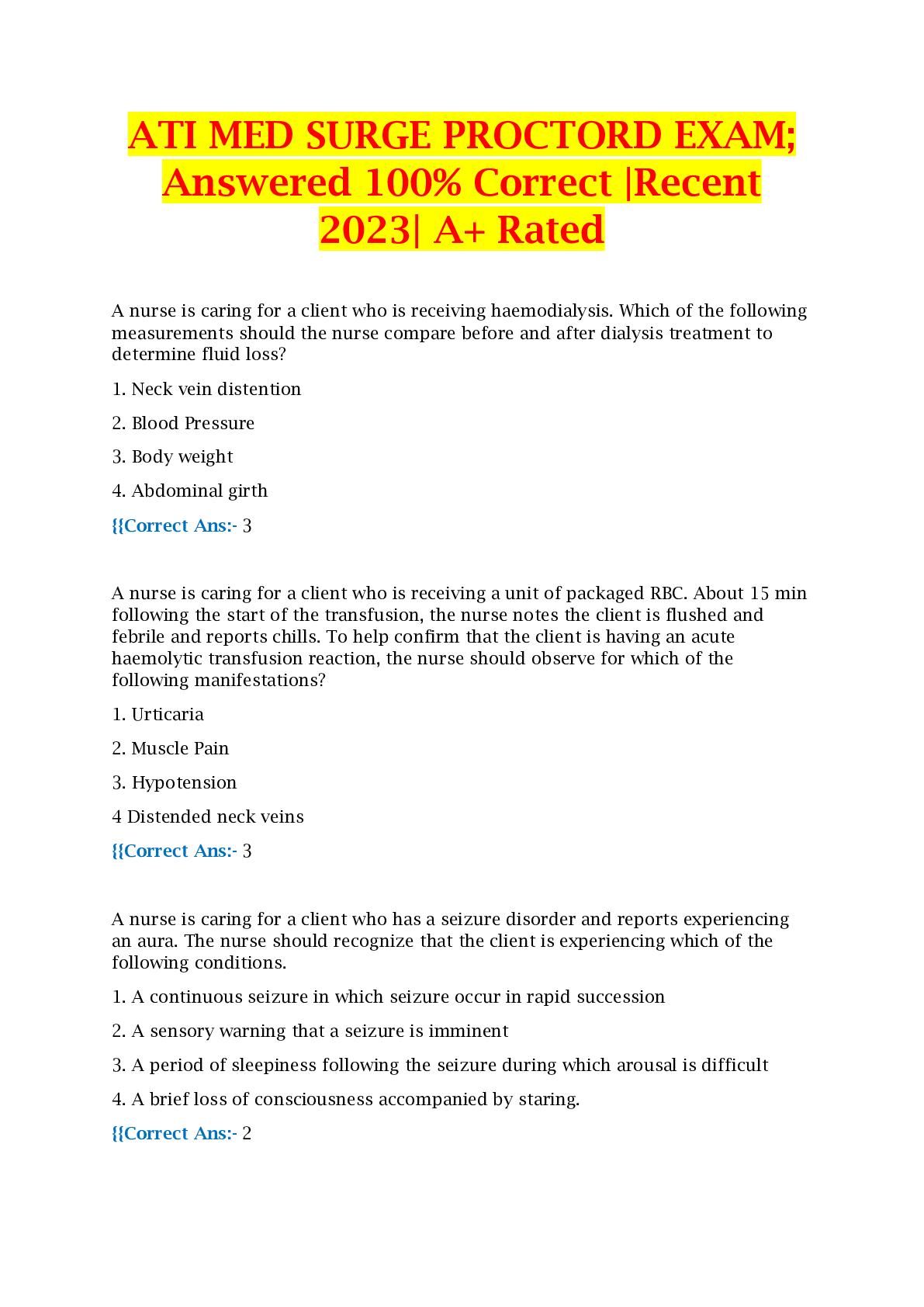





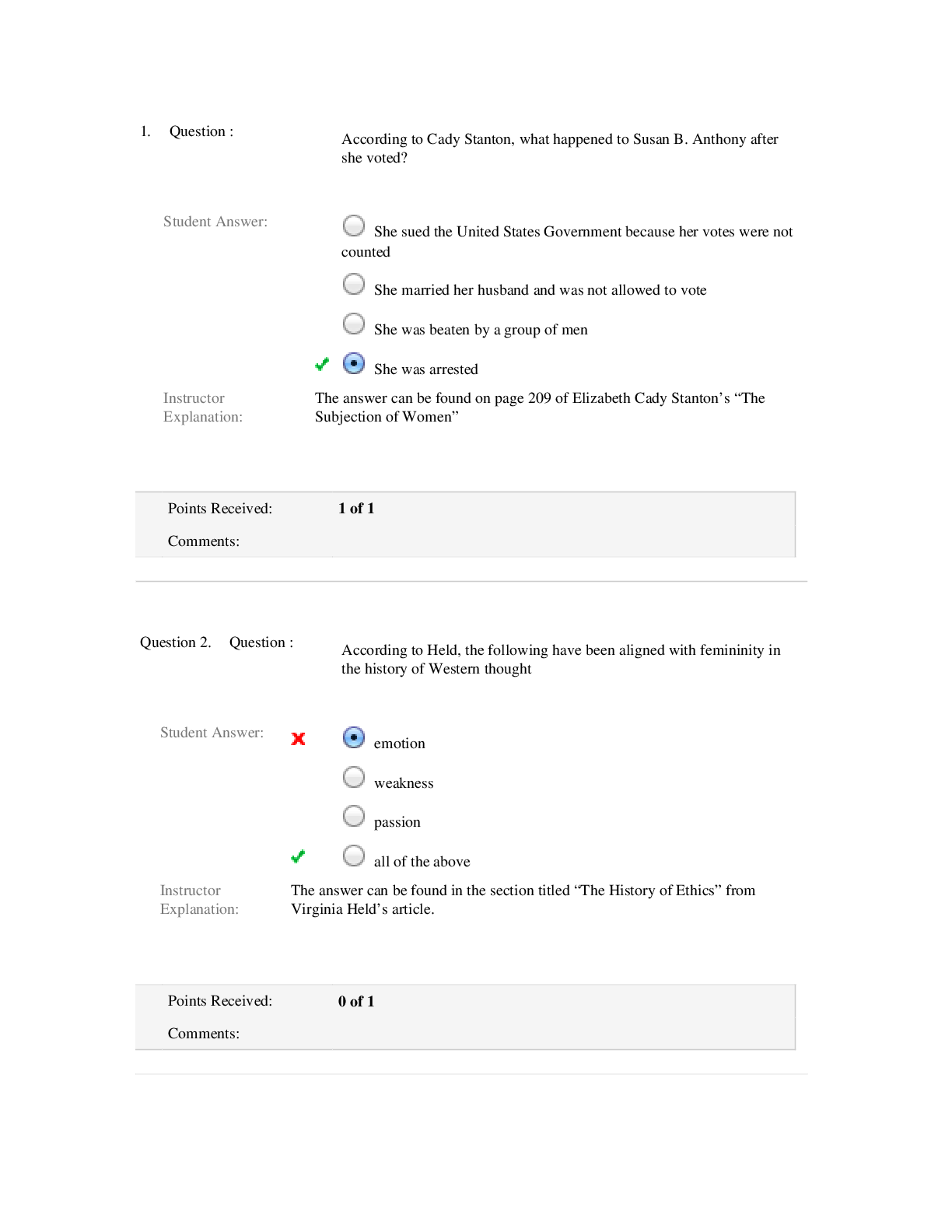
.png)
.png)

